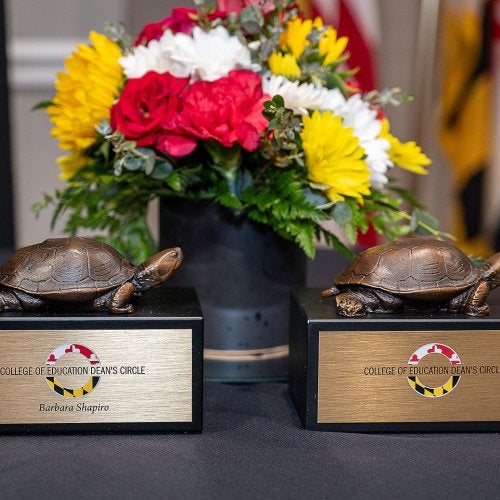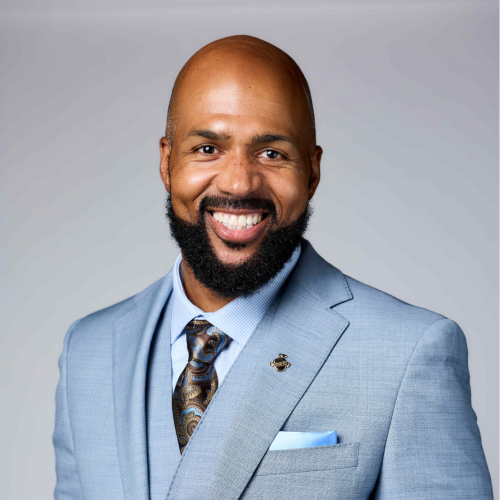

Expanding Rights Through Education Policy

As a young girl, Bernice Sandler Ed.D. ’69, born in Brooklyn in 1928, was not able to do many classroom activities that were deemed the province of boys, like being a crossing guard or running the slide projector.
“You know, simple everyday things… ‘Oh, we'll have the boys do this.’ If it was important, the boys did it,” said Marty Langelan, a long-time friend and col-league of Dr. Sandler, in an NPR article announcing her death in 2019. “And she told her mother back then, when she was a schoolgirl, that she was going to change the world, that this was wrong.”
Indeed, Dr. Sandler did change the world by spear-heading landmark legislation, called Title IX of the Education Amendments of 1972, to address gender discrimination in education.
After receiving her bachelor’s degree in psychology from Brooklyn College, Dr. Sandler received her master’s degree in clinical and school psychology from City College of New York. Accompanied by her husband Jerome and two children, Dr. Sandler attended the UMD College of Education, where she completed a doctorate in counseling and personnel services in 1969.
“I had been teaching part-time at the University of Maryland for several years during the time I worked on my doctorate and shortly after I finished it,” Dr. Sandler wrote in 1997, in About Women on Campus, the former newsletter of the National Association for Women in Education.
“There were seven openings in the depart-ment and I had just asked a faculty member, a friend of mine, why I was not even considered for any of the openings. It was not my qualifications; they were excellent. ‘But let's face it,’ he said, ‘You come on too strong for a woman.’”
Her initial reaction was to go home, cry and blame herself for being too out-spoken as a graduate student and part-time faculty member. It was her husband, however, who labeled the university’s response as sex discrimination.
At the time, Dr. Sandler was leery of the women’s movement, which she viewed as abrasive. But after receiving multiple rejections from other employers, including one who said she was “just a housewife who went back to school,” she decided to address the discrimination head-on.
By researching the efforts of black civil rights activists, Dr. Sandler identified a legal strategy to address bias against women in educational institutions. Executive Order 11246, issued by President Johnson in 1968, prohibited discrimination in employment decisions involving federal contractors on the basis of “race, color, religion, sex, or national origin.”
Knowing the many federal contracts held by universities, Dr. Sandler began working with the U.S. Department of Labor, and then the Women’s Equity Action League (WEAL), to file complaints nationwide against colleges and universities for sex discrimination. Women faculty realized she could file com-plaints on their behalf anonymously, once they had gathered data showing bias.
“The pattern was clear: the higher the rank, the fewer the women. The more prestigious the field, the department, or institution, the fewer the women. At the administrative ranks, women were a rarity; at that time even many women’s colleges were headed by men,” Dr. Sandler wrote in About Women on Campus. “I used to quip that, were it not for the Catholic sisters who headed their own women’s colleges, the number of [endangered] whooping cranes would exceed the number of women who were college presidents.”
In 1970, WEAL filed a national class- action lawsuit against universities, alleging illegal discrimination against women in admissions, financial assistance, hiring, promotion and other practices.
Dr. Sandler collaborated with members of the U.S. Congress, several of whom held hearings on gender discrimination in edu-cation. Oregon Rep. Edith Green hired Dr. Sandler to write a report of the hearings.
Shortly after, President Nixon signed Title IX of the Education Amendments of 1972, which has advanced educational equality and opportunities for girls and women. Initially focused on admissions and hiring quotas in higher education, the law now applies to K-12 school districts, universities, museums, libraries, athletics and charter schools.
“Title IX turned out to be the legislative equivalent of a Swiss Army knife,” Langelan told The New York Times in 2019.
The law led to global changes, as well as concrete changes at the University of Maryland.
At a Maryland State Senate hearing on February 27, 2020, Senate President Emeritus Mike Miller noted that Title IX had even led to the creation of the UMD campus’ Xfinity Center, as previous women’s teams were forced to change clothes in a bread truck due to the lack of facilities for women athletes.
“The Office of Civil Rights and Sexual Misconduct (OCRSM) at the University of Maryland remembers Dr. Bernice Sandler for decades of outstanding contributions to the field of civil rights and advocacy for educational protections for women. We commend Dr. Sandler's perseverance in ending sex discrimination. OCRSM recognizes Dr. Sandler as a trailblazer and staunch advocate for future generations to come,” Grace Celia Karmiol, UMD’s Title IX coordinator/director, said.
While Dr. Sandler did not believe that Title IX ended sex discrimination in education, she recognized that it irretrievably improved opportunities for girls and women. In 2013, Dr. Sandler was inducted into the National Women’s Hall of Fame for her pioneering work. While she died in January 2019, her legacy has transformed education for generations to come.
[Illustration of woman with Title IX sign by Gwen Keraval]
This article originally appeared in the Summer 2020 issue of Endeavors, the UMD College of Education's alumni magazine.



